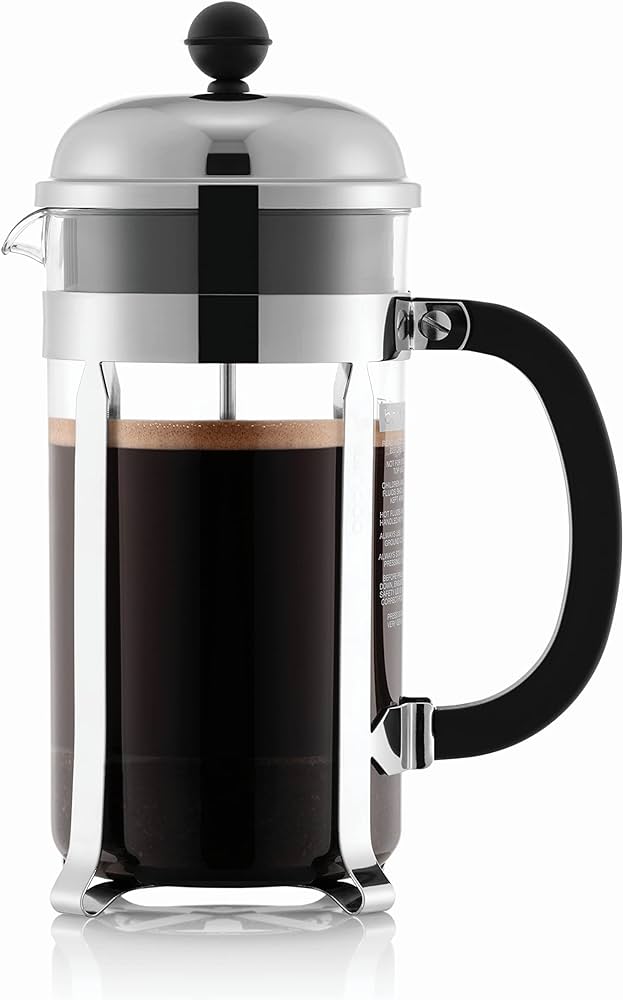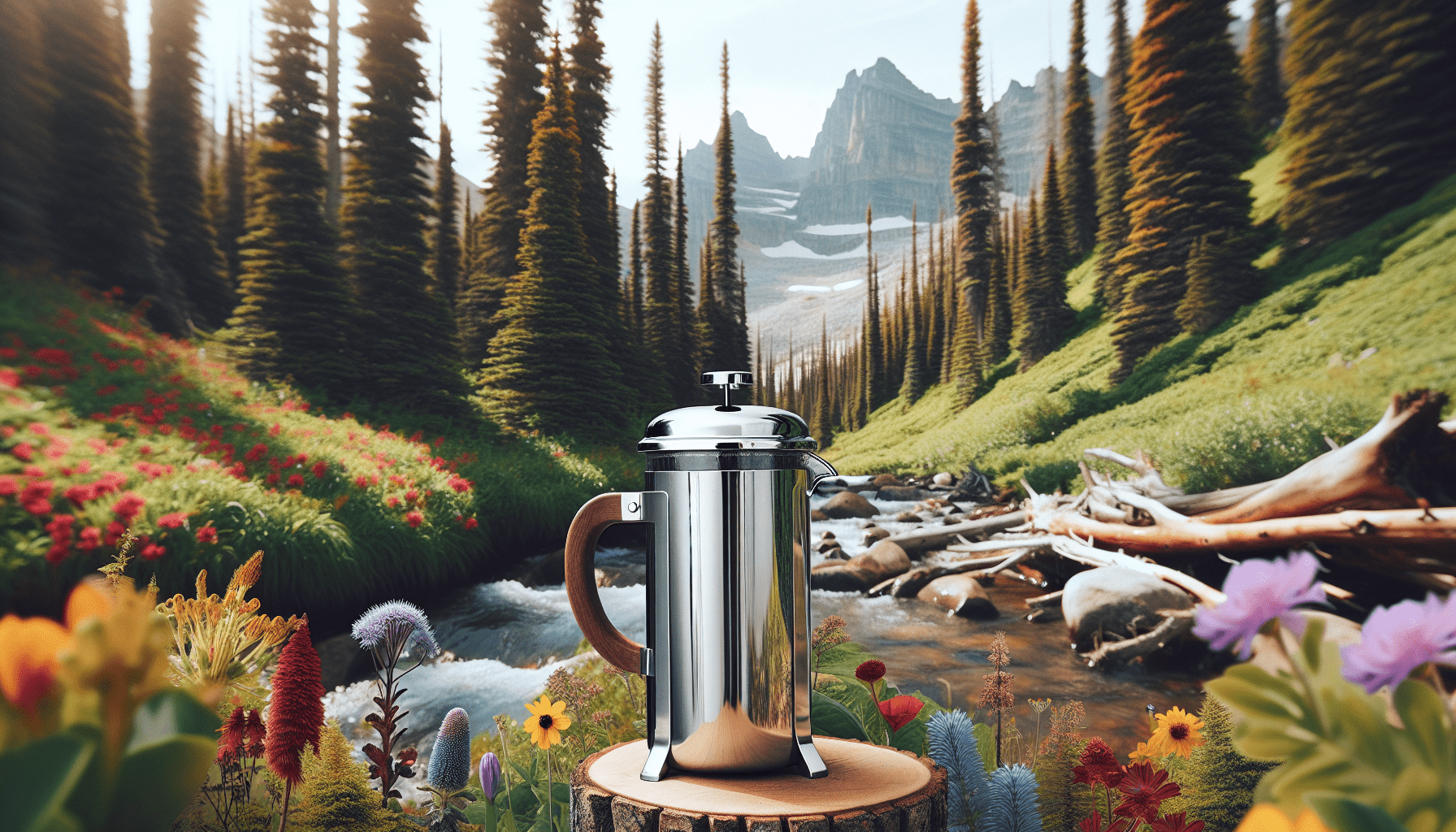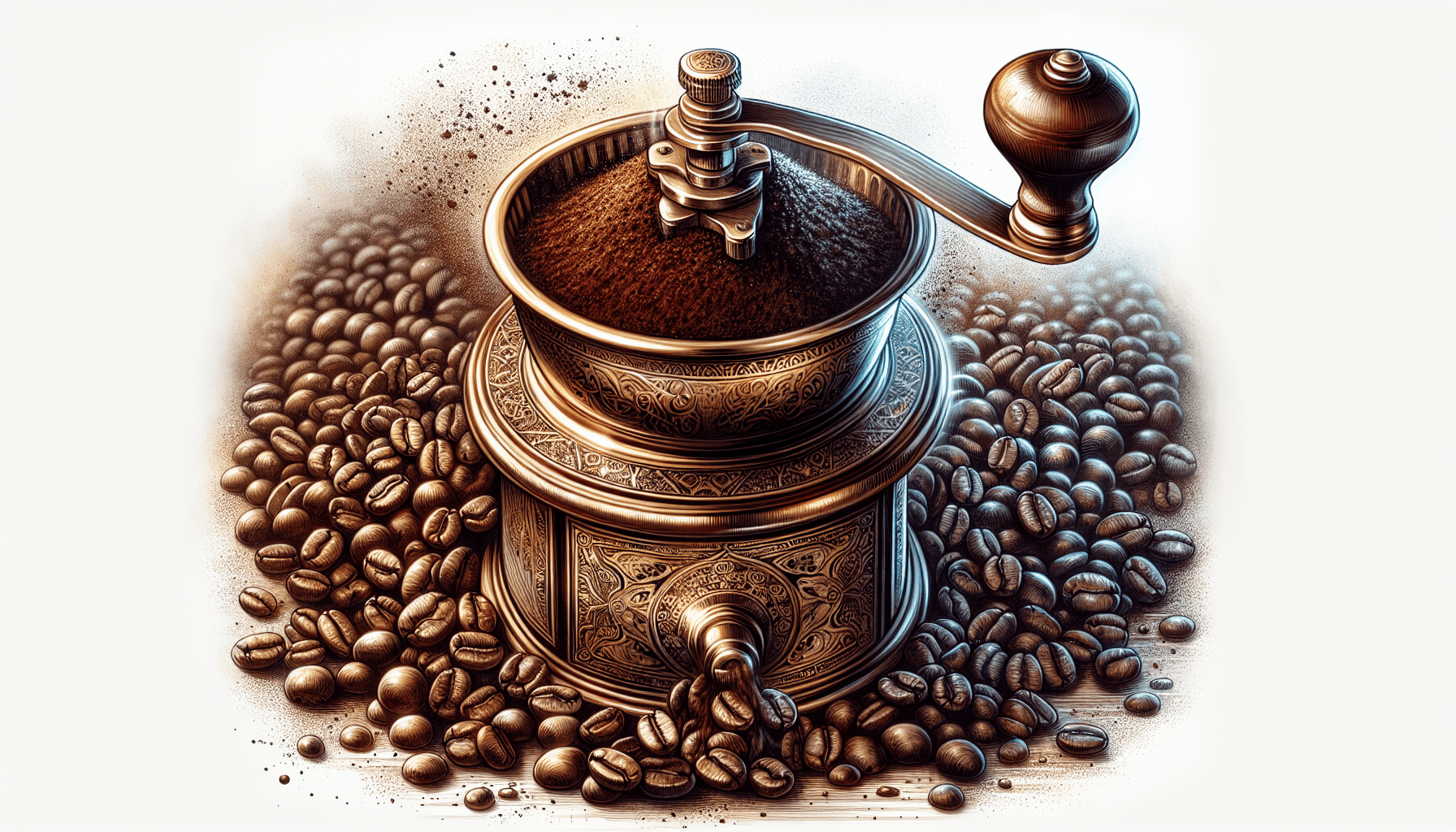So you’re curious about how to use a French press? Don’t worry, it’s easier than you think! Whether you’re a coffee aficionado looking to explore different brewing methods or a newbie in the world of coffee, the French press is a great tool to have in your arsenal. This article will walk you through the simple steps of using a French press to make a delicious cup of coffee right in the comfort of your own home. Let’s get brewing!
Preparing the French Press
Gather the necessary equipment
Before you start brewing with a French press, make sure you have all the necessary equipment on hand. You will need a French press, freshly roasted coffee beans, a coffee grinder, a kettle for boiling water, and cups to serve your coffee in.
Measure and grind coffee beans
The key to a great French press coffee is using the right amount of coffee grounds. A general rule of thumb is to use a ratio of 1:15, meaning 1 gram of coffee grounds for every 15 milliliters of water. Use a kitchen scale to measure the desired amount of coffee beans and then grind them to a coarse consistency. The coarse grind is important to prevent over-extraction and ensure a smooth cup of coffee.
Preheat the French press
To ensure the water stays hot throughout the brewing process, it’s crucial to preheat your French press. Fill the French press with hot water and let it sit for a few minutes. Then, empty the water and you’re ready for the brewing process.
Brewing Process
Add coffee grounds
After preheating the French press, add the desired amount of coffee grounds to the empty press. Remember to use the recommended coffee-to-water ratio for the perfect brew. If you enjoy a stronger cup of coffee, you can add a little extra coffee grounds.
Pour hot water
Once the coffee grounds are in the French press, slowly pour hot water over the grounds. The water should be heated to around 200°F (93°C) for optimal extraction. Pour the water in a circular motion to ensure even saturation of the coffee grounds. Be careful not to overfill the French press, leaving some space at the top for stirring and the plunger.
Stir the mixture
After pouring the hot water, give the mixture a gentle stir using a long-handled spoon or paddle. This will help to break up any clumps of coffee grounds and ensure an even extraction. Stir for about 10-15 seconds to fully incorporate the coffee and water.
Let it steep
Once you’ve stirred the coffee and water mixture, place the lid on the French press, but do not press the plunger down yet. Let the coffee steep for about 4 minutes. This allows the flavors to fully develop and results in a rich, full-bodied cup of coffee.
Press the plunger
After the steeping time is complete, it’s time to press the plunger down gently. Hold the lid of the French press with one hand and slowly push the plunger down with the other hand. The mesh filter will separate the coffee grounds from the brewed coffee as you press down. Take your time and apply consistent pressure to avoid any spills or splatters.
Decanting and Serving
Remove the lid and plunger
Once you have pressed the plunger all the way down, remove the lid and plunger from the French press. This will prevent the coffee from over-extracting and becoming bitter as it continues to sit in the French press.
Gently swirl the coffee
Before pouring the coffee into cups, take a moment to gently swirl it in the French press. This will help to evenly distribute any oils or sediment that may have settled at the bottom. It’s a simple step that ensures each cup of coffee has consistent flavor and texture.
Pour coffee into cups
With the coffee properly swirled, carefully pour it into your cups. Take your time and pour slowly to avoid any spills or splashes. If you’re serving multiple cups, make sure to evenly distribute the coffee among them.
Serve immediately
French press coffee is best enjoyed immediately after brewing. The flavors are at their peak when the coffee is freshly brewed, so be sure to serve it right away. Pour a cup for yourself and any guests, and savor the rich aroma and delicious taste of your homemade French press coffee.
Tips for a Perfect French Press Coffee
Choose the right coffee-to-water ratio
The ideal coffee-to-water ratio can vary depending on personal preference and the strength of coffee you enjoy. Start with a ratio of 1:15 and adjust from there based on your taste preferences. If you find the coffee too strong, reduce the coffee grounds, and if it’s too weak, increase the amount of coffee.
Use freshly roasted coffee beans
For the best flavor, always use freshly roasted coffee beans. Coffee beans begin to lose their flavor shortly after roasting, so try to purchase beans that have a roast date within a few weeks of your desired brewing date. Fresh beans will result in a more vibrant and aromatic cup of coffee.
Adjust the grind size
The grind size can greatly affect the flavor and extraction of the coffee. For French press brewing, a coarse grind is preferred. This allows for proper extraction without the risk of over-extraction or bitterness. Experiment with grind sizes to find the perfect balance for your taste preferences.
Experiment with brewing time
While the recommended brewing time for French press coffee is around 4 minutes, you can experiment with shorter or longer steeping times to adjust the strength and flavor profile of your coffee. Shorter steeping times may result in a milder cup, while longer steeping times can bring out bolder flavors. Find the brewing time that suits your taste preferences.
Keep the French press clean
To ensure each cup of coffee is as delicious as the last, it’s important to keep your French press clean. After each use, thoroughly rinse the press with hot water to remove any residual oils or coffee grounds. Regularly deep clean the French press by disassembling the plunger and filter parts and washing them with warm soapy water. A clean French press will result in a cleaner and more flavorful cup of coffee.
Troubleshooting Common Issues
Bitter or over-extracted coffee
If your French press coffee tastes bitter or over-extracted, it may be a result of using too much coffee grounds or brewing for too long. Adjust the coffee-to-water ratio and decrease the brewing time to improve the taste. Additionally, make sure you’re using a coarser grind size to prevent over-extraction.
Weak or under-extracted coffee
On the other hand, if your coffee tastes weak or under-extracted, it may be due to using too little coffee grounds or not brewing long enough. Increase the coffee-to-water ratio and extend the brewing time slightly to strengthen the flavor. Also, check that your grind size is coarse enough to allow for proper extraction.
Sediment in the coffee
Some sediment in French press coffee is normal due to the mesh filter not capturing all the fin particles. However, if you find that there is excessive sediment in your cup, try using a finer grind size or consider investing in a French press with a finer mesh filter. Alternatively, you can use a coarser grind and wait for the sediment to settle before pouring the coffee into cups.
Difficulty pressing the plunger
If you’re having difficulty pressing the plunger down, it may be because of a fine grind size or too many coffee grounds. A finer grind can create more resistance, making it harder to press down. Adjust the grind size to a coarser setting and use the appropriate amount of coffee grounds to ensure smooth plunging.
Variations and Additions
Adding milk or cream
If you enjoy your coffee with some creaminess, feel free to add milk or cream to your French press coffee. After decanting the coffee into cups, simply pour in a desired amount of milk or cream and stir gently to incorporate. This adds a smooth and luscious touch to your cup of coffee.
Flavoring with syrups and spices
For those who like to experiment with flavors, French press coffee provides a great opportunity. You can add flavored syrups, such as vanilla or caramel, directly to the coffee after brewing. Additionally, try adding a pinch of spices like cinnamon or nutmeg to enhance the aroma and taste of your coffee.
Using a French press for tea
Although traditionally used for coffee, a French press can also be used to brew loose-leaf tea. Simply replace the coffee grounds with your favorite tea leaves and follow the same brewing process. Steep the tea for the appropriate time, press the plunger, and enjoy a flavorful cup of tea.
Cold brew with a French press
If you prefer your coffee cold, you can easily make cold brew with a French press. Instead of using hot water, add room temperature or cold water to the French press along with the coffee grounds. Stir gently and let it steep in the refrigerator for 12-24 hours. Once the steeping time is complete, press the plunger and pour the cold brew over ice for a refreshing and smooth coffee treat.
Cleaning and Maintenance
Dispose of used coffee grounds
After brewing, dispose of the used coffee grounds by composting or disposing of them in an appropriate manner. Coffee grounds make excellent natural fertilizers and can be a beneficial addition to your garden or plants.
Rinse the French press with hot water
After removing the used coffee grounds, rinse the French press with hot water to remove any remaining residue. Use a sponge or brush to scrub the sides and the mesh filter, ensuring all coffee oils and sediment are washed away.
Remove oils and residue
If you notice a build-up of oils or residue on the French press, you can use a mixture of warm water and mild dish soap to clean it thoroughly. Gently scrub the interior and exterior surfaces with a sponge or brush, paying extra attention to the mesh filter. Rinse the French press thoroughly with hot water to remove any soap residue.
Regularly deep clean the French press
To keep your French press in optimal condition, it’s recommended to deep clean it periodically. Disassemble the plunger, including the mesh filter, and wash each part with warm soapy water. Pay attention to any hard-to-reach areas and use a brush if needed. After cleaning, rinse all parts thoroughly and reassemble the French press.
Storing a French Press
Ensure the French press is fully dry
Before storing your French press, ensure that all parts are completely dry. Moisture can lead to mold or mildew growth, affecting the quality of future brews. Take the time to thoroughly dry each component, especially the mesh filter, before putting the French press away.
Store in a cool and dry place
Find a cool and dry place to store your French press when it’s not in use. Avoid storing it near sources of heat or in direct sunlight, as this can affect the durability and functionality of the French press. A cool and dry environment will help prolong the life of your French press.
Avoid exposure to sunlight
Direct sunlight can deteriorate the materials used in the French press, causing discoloration or weakening of the components. To preserve the quality and appearance of your French press, store it in a shaded area away from exposure to sunlight.
Benefits of a French Press
Rich and flavorful coffee
Using a French press allows for a full extraction of flavors from the coffee grounds, resulting in a rich and flavorful cup of coffee. The combination of coffee and water steeping together enhances the natural oils and aromas, producing a more robust and nuanced coffee profile.
Flexible brewing options
With a French press, you have the flexibility to explore various brewing options. You can adjust the coffee-to-water ratio, grind size, and brewing time to customize your cup of coffee to your liking. This versatility allows you to experiment and find the perfect balance of flavors that suits your taste preferences.
Sustainable and eco-friendly
Using a French press is an eco-friendly way to brew coffee. Unlike paper filters used in other brewing methods, the mesh filter in a French press is reusable, reducing waste. Additionally, brewing coffee with a French press eliminates the need for single-use pods or capsules, further reducing your environmental impact.
Affordable and portable
French presses are relatively affordable compared to other coffee brewing devices. They are also portable and don’t require electricity, making them ideal for travel or camping. With a French press, you can enjoy a high-quality cup of coffee anywhere, anytime.
Conclusion
Using a French press is a simple and rewarding way to brew delicious coffee at home. By following a few basic steps, you can elevate your coffee experience and enjoy a flavorful and aromatic cup of coffee. Whether you’re a coffee aficionado or a casual coffee drinker, the French press offers versatility and the ability to customize your brew to suit your taste preferences. So gather your equipment, measure your coffee beans, preheat your French press, and get ready to savor every sip from your homemade French press coffee. Cheers!



